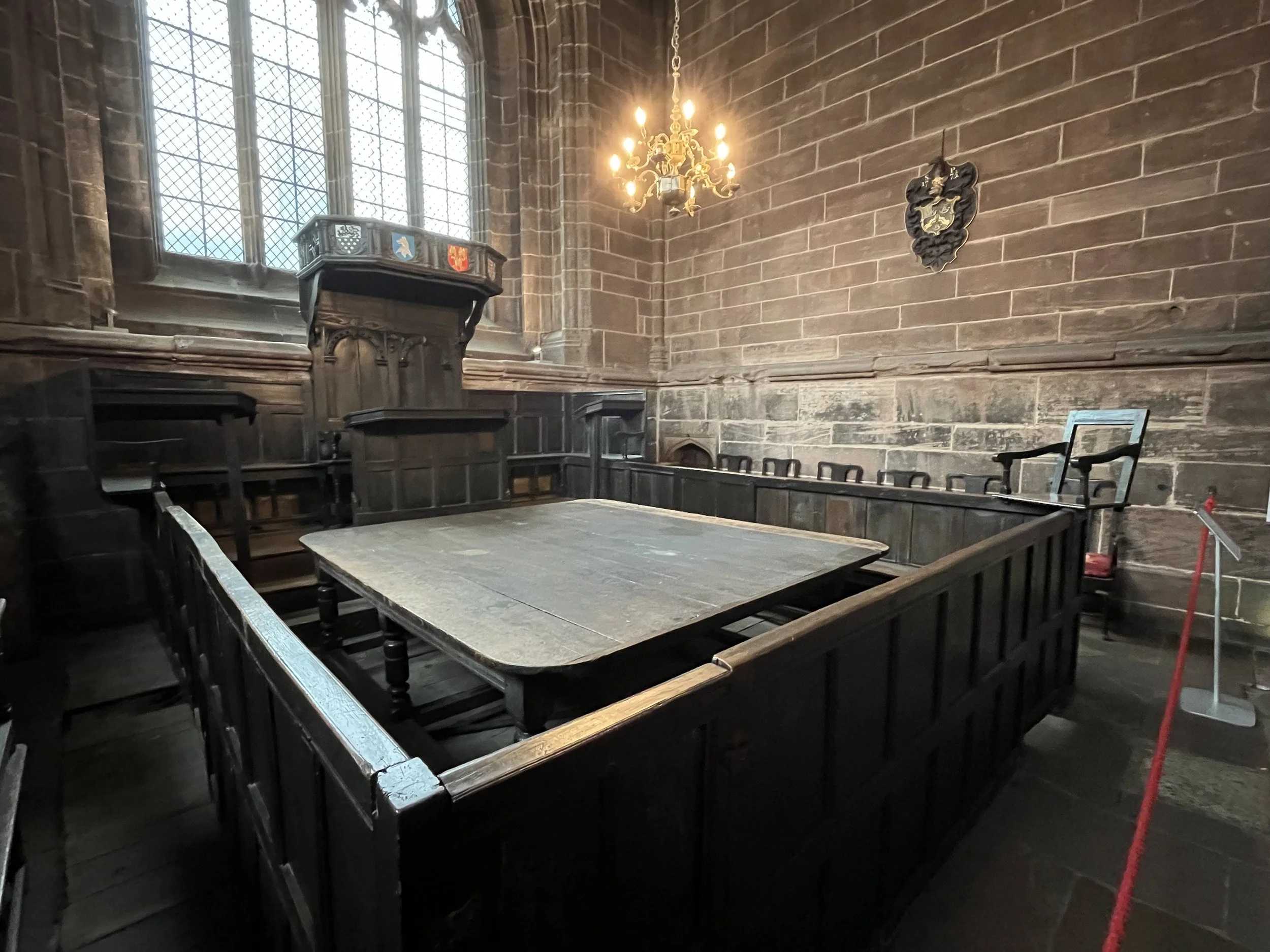Holding Court
The consistory court in Chester Cathedral
In the south west tower of Chester Cathedral you’ll find what looks like a set from a Harry Potter film, with an intricately decorated wooden throne for Professor Dumbledore in front of a massive table which would be perfect for a magical game of cards between Gryffindor and Slytherin. However, this elaborate set of furniture is, in fact, the oldest example of a consistory courthouse in England, dating from the 17th Century.
In the Early Modern period of English history (essentially from the 16th to 18th Centuries) consistory courts were church courts which heard cases relating to crimes of the clergy and moral crimes of the laity. In the late 17th Century the list of these moral crimes would have included slander and tale-bearing, drunkenness, throwing stones at a church, refusing to say the Ten Commandments, dancing on a Sunday and playing football during the church service. The most common offence, however, would have been failing to attend church on Sunday.
Professor Dumbeldore’s throne was, in reality, where the court’s presiding judge – called a Chancellor – would have sat, while a court official called an apparitor was in the “umpire’s chair” on the right hand side; his role was to supervise the workings of the court which took place around the huge wooden table.
The massive table was needed for all the court papers, which would have been piled up ready for use and then spread out for the lawyers to read and discuss. Consistory courts were mainly paper-based courts, with the most typical crime being recusancy – or failure to conform with the religious requirements of the Church of England - which was mainly demonstrated by parishioners failing to attend their parish church on Sundays. The parish priest would then make a list of recusants in his parish, which he would send to the consistory court, often leading to fines for the miscreants of a shilling for each week of non-attendance.
For more serious offences the accused could be required to attend the court in person, but would have to stand or sit outside the barrier that surrounds the table, as only lawyers were allowed to go inside and sit around the table. This essentially medieval court layout is why lawyers who are allowed to advocate for their clients before a judge and jury in the higher courts in England and Wales are “called to the bar” when they qualify and why they then join the profession of “barrister”.
The consistory court in Chester did also hear cases for much more serious crimes, such as heresy, for which the accused was required to appear in person. The most famous case heard by the consistory court of Chester was the trial of the Protestant preacher, George Marsh. His imprisonment, trial for heresy by the Bishop of Chester and subsequent punishment is the subject of my next blog.
